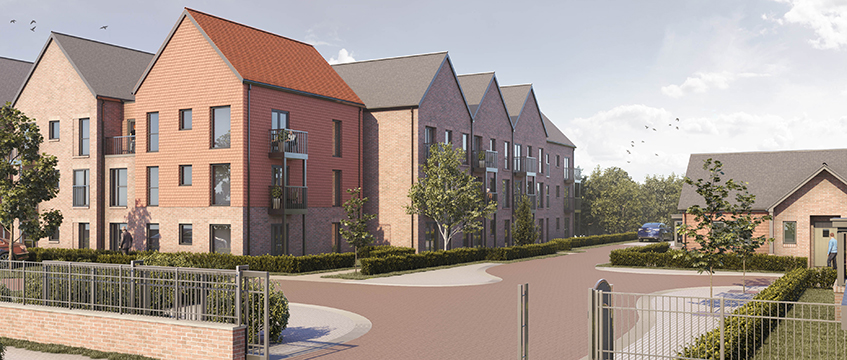Retirement living developer McCarthy & Stone has tried to move with the times. A transformation to embrace build-to-rent and a luxury service offering has struggled against weakening market sentiment and a shrinking share price.
In March, Covid-19 sent McCarthy’s share price plummeting to an all-time low of 48.3p, a world away from its IPO price of 209.3p. While it has clawed back some value, trading significantly below NAV made it a target for M&A.
Enter US private equity giant Lone Star with a £630m take private bid, safely taking the housebuilder off the public stage and into strategy mode.
The investor has agreed to pay 115p per share for McCarthy & Stone – a 38.6% premium to its closing share price of 83p per share on 22 October. This represents a 19.6% discount to NAV per share, based on its latest annual report, for the period ending October 2019, and a 12.2% discount to tangible NAV per share.
Lone Star insists it doesn’t “intend to make any material restructuring” in the business functions, operations and redeployment of the asset base. But, McCarthy & Stone directors acknowledge the benefits “creating the required environment” for those unproven rental and mixed tenure strategies.
The Texas-based fund manager’s move into retirement housing follows similar commitment from private equity houses targeting a for-sale product. In 2017, AXA IM bought Retirement Villages and L&G acquired Inspired Villages, while Goldman Sachs recently raised £500m for its later living business, Riverstone. But, given Lone Star’s track record, establishing Quintain as a BTR-first developer, all eyes will be on McCarthy & Stone’s BTR offering to spearhead growth.
BTR boom
“For housebuilders, the crucial financial metric is return on equity. That type of metric for a stock like McCarthy & Stone has just been declining gradually over the last five years,” says Tom Horne, equity research analyst at Berenberg.
In results for the six months to the end of April, McCarthy & Stone posted a return on capital employed of 4%, down from 10% a year earlier, alongside a pre-tax loss of £91.3m and a revenue slump of 64%, warning there would be worse to come in H2.
“McCarthy & Stone started alluding more and more that they were offering this multi-tenure option for residents. That really pointed to more of a PRS model. That is the base case scenario from here on. There doesn’t seem to be demand or capacity to buy these units outright,” said Horne.
“In my honest opinion, that’s the sole purpose for Lone Star making this acquisition; at least it is the best case that Lone Star must be assuming.”
Similarly, analysts at Jefferies have been quick to highlight private equity interest in McCarthy & Stone’s rental offering as a major factor. But, while the mixed-tenure offering chimes with McCarthy & Stone’s ambitions and could bolster the developer’s longer-term resilience, much like Quintain, longer-term BTR backing is unlikely given Lone Star’s ambitious value-add return targets.
Last year, McCarthy & Stone launched a hunt for a capital partner to back a £300m rental portfolio. In the cash offer small print it notes that the board will continue that search for a capital partner but doesn’t expect this in the near term. Meanwhile, after ditching a potential sale of Quintain in 2018, some three years after acquisition, Lone Star has instructed JP Morgan to find a buyer for the £3bn company, freeing the PE giant up for new ventures.
Post-pandemic housebuilder M&A
Jefferies also noted Crest Nicholson, Vistry and Redrow as trading at 20-30% discounts to book value. But, it maintains that any M&A will “likely be driven by private equity rather than listed housebuilders” and purchases will likely be land led.
At the end of H1, McCarthy & Stone had around £350m of finished stock and a land bank of 7,959 units spread across the UK, which it estimated would take four and a half years to build out.
“If you stop developing, you stop making money – you have to be active,” says Neal Hudson of Residential Analysts. But he notes that the volume housebuilders are far better off compared with the last downturn. “There’s not the debt there was before; they haven’t overpaid for land the way they had before. It won’t be easy for them, but they are in much better positions than they were before.”
While listed companies may be bargains right now, private vendors are also not shying from selling up. Earlier this year, London’s largest private housebuilder, Galliard, appointed Jefferies to sell a stake in the business.
“The question is: what is the price?” says Hudson. “There’s been an awful lot of money floating around the edges of the residential markets, in development, investment and a whole range since the last downturn. There will be those who are interested and willing to take a punt on what might happen in the future.”
To send feedback, e-mail emma.rosser@egi.co.uk or tweet @EmmaARosser or @estatesgazette











